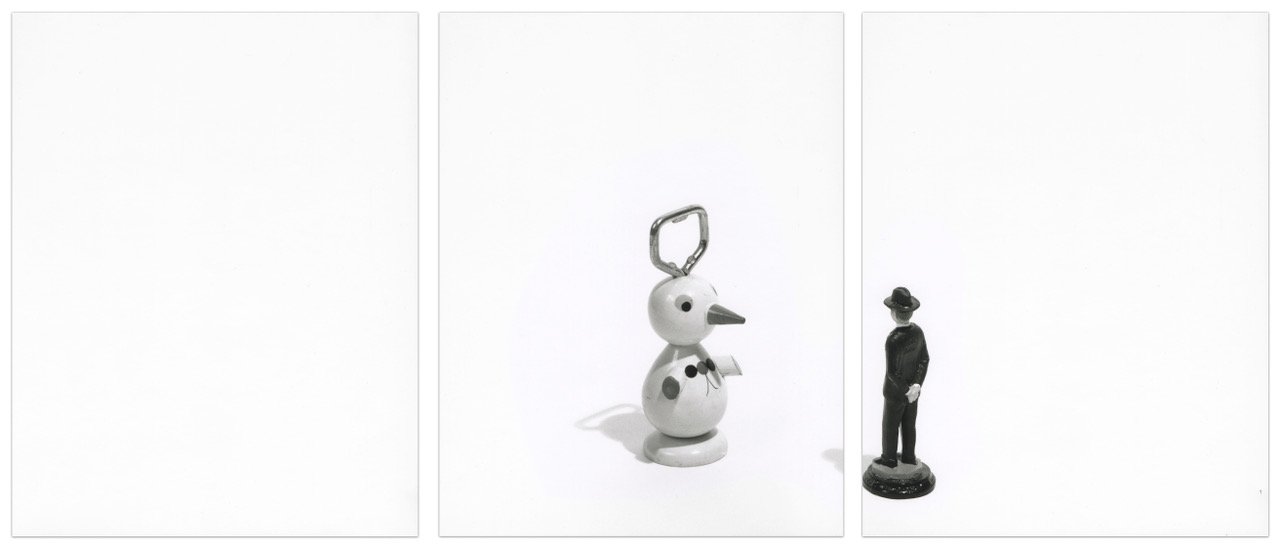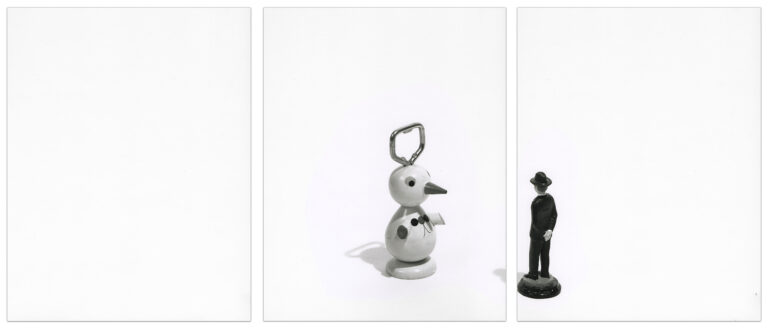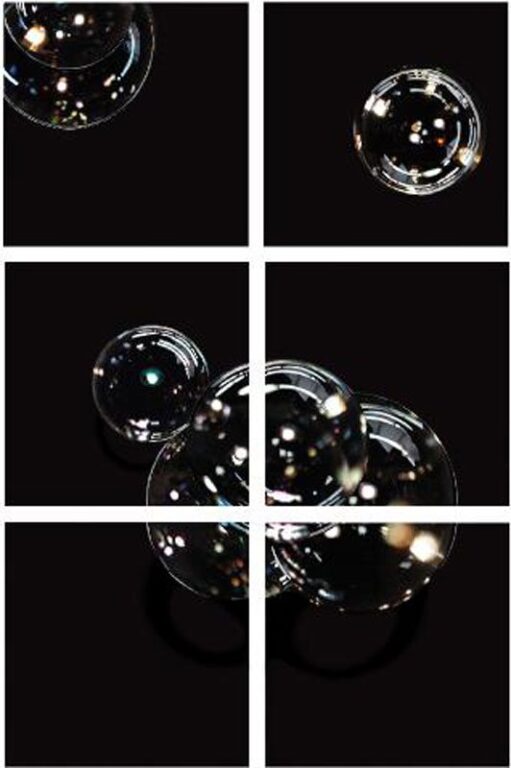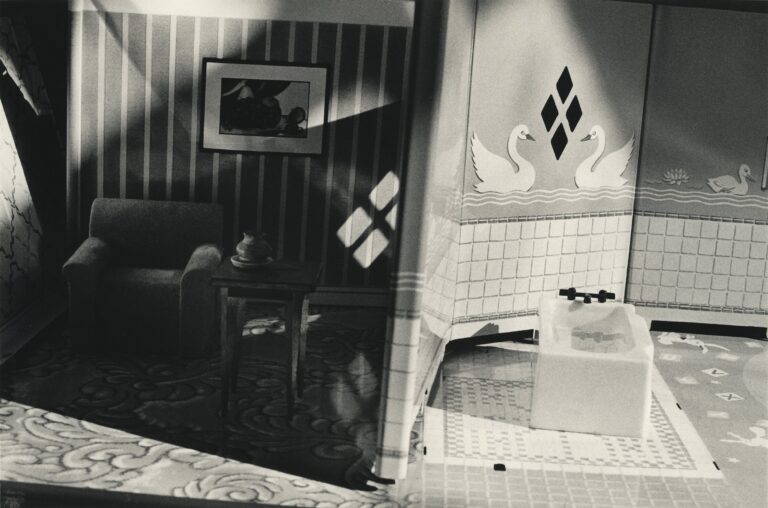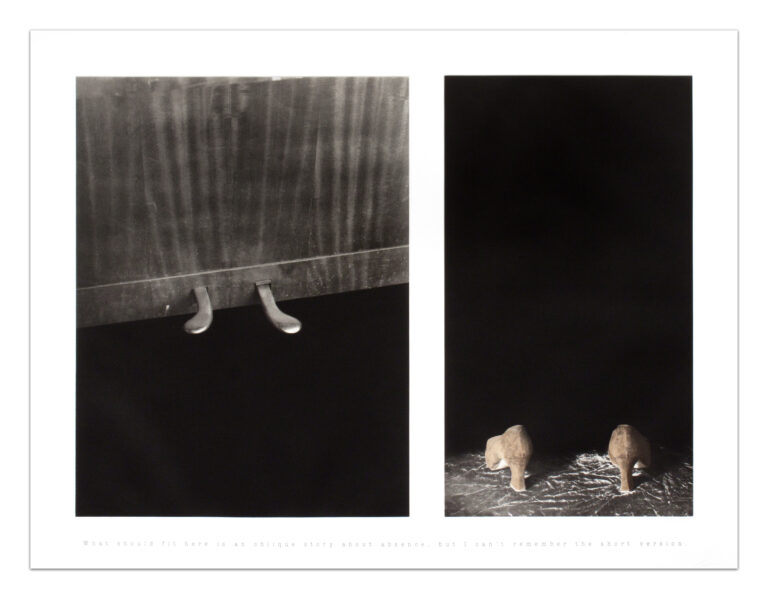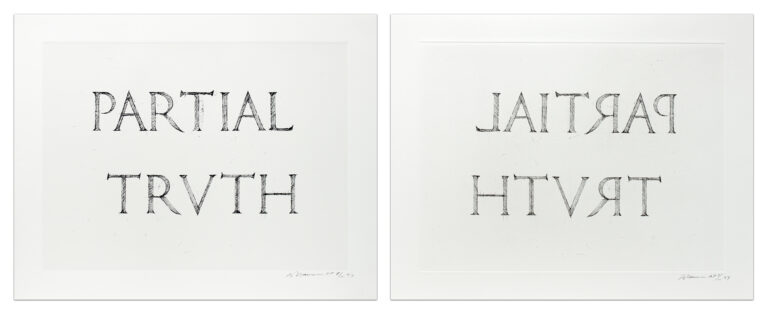Dialogue (with Bottle Opener)
1995
Silver gelatin prints in three parts
Edition of 5
Overall size: 11 x 25 3/8 inches (27.9 x 64.5 cm)
Image/paper size: 11 x 8 1/2 inches each (27.9 x 21.6 cm each)
Signed, titled, dated, and numbered on reverse on sheet III
(Inventory #31863)
Liliana Porter
Dialogue (with Bottle Opener)
1995
Silver gelatin prints in three parts
Edition of 5
Overall size: 11 x 25 3/8 inches (27.9 x 64.5 cm)
Image/paper size: 11 x 8 1/2 inches each (27.9 x 21.6 cm each)
Signed, titled, dated, and numbered on reverse on sheet III
(Inventory #31863)
